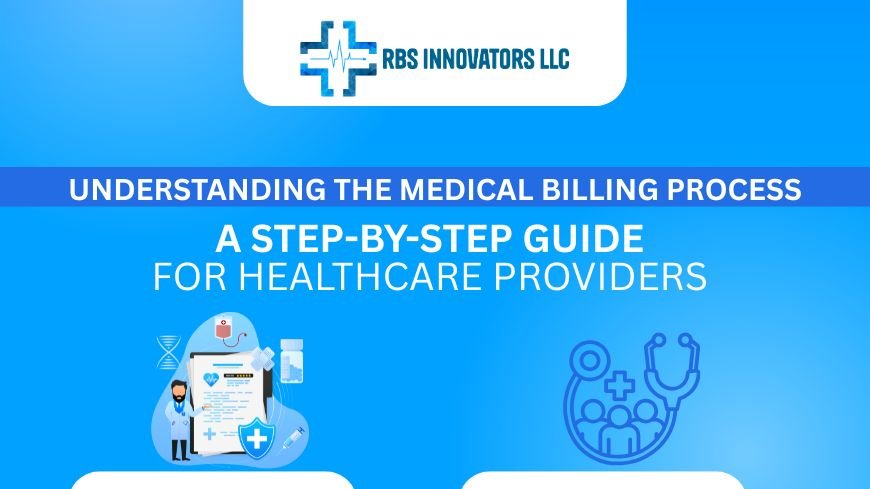To reduce claim rejections and improve timely reimbursements, it is crucial for healthcare providers to understand the medical billing process. The medical billing process includes various steps___ from registering patients to final payment posting, there is alot to deal with.
Here we will breakdown the medical billing process cycle in the easiest possible way to help healthcare providers, billing teams, and office managers improve revenue cycle management (RCM) and streamlining operations.
Step by Step Guide to Medical Billing Process
The process begins with;
1. Patient Registration
Collecting the demographics and insurance information of the patient.
- Patient’s name, date of birth, and contact details
- Insurance provider & policy number
- Verifying the eligibility & benefits
Pro Tip: Utilize real-time insurance verification tools to minimize front-end denials.
2. Medical Coding of Diagnosis and Procedures
Next step is to translate clinical documentation into standardized codes. Here,
- ICD-10 is used for diagnosis
- CPT/HCPCS for procedures and services
Pro Tip: Accurate coding is mandatory for proper claim submissions and reimbursements.
3. Charge Entry
In charge entry, all billable services are entered into the billing software. Charge entry includes;
- Provider info
- Service codes
- Fee Schedules
Pro Tip: To avoid claim delays, make sure the charges align with documentation and coding.
4. Claim Generation & Submission
Claim is generated using the patient and service data and than submitted to the payer electronically (via EDI) or manually. These claims can be submitted to;
- Medicare/Medicaid
- Commercial Insurance Carriers
- Workers Compensation
5. Claim Scrubbing & Edits
Billing software is used to scrub the claims for error before submission. The claim scrubbing ensures;
- Require fields are completed
- Checking for incorrect codes
- Validating NPI Numbers
Pro Tip: Clean claims result in quick reimbursements.
6. Insurance Adjudication
Upon receiving the claims, the payer process it based on;
- Plan coverage
- Provider contract terms
- Allowed amounts & patient responsibility
The payer then forward an Electronic Remittance Advice (ERA) or Explanation of Benefits (EOB).
7. Patient Billing
In case the balance is remaining after insurance;
- Send a patient statement
- Include clear breakdowns & payment options
8. Payment Posting
All the payments received are posted to the patient’s account;
- Cross-check ERA/EOB with the billed amount
- Post adjustments or denials if applicable
9. Denial Management & Appeals
In case the claim is denied;
- Review the denial reason
- Correct errors & resubmit
- File appeals if necessary
Pro Tip: Proactive denial tracking can minimize recurring issues.
10. Reporting & Analytics
Track key performance indicators (KPIs):
- Days in A/R
- First-pass claim acceptance rate
- Denial rate
Why a Smooth Medical Billing Process Matters
- To ensure timely and accurate payments
- To reduce administrative costs
- To improves patient satisfaction
- and, to support financial stability of healthcare practices
Also Read: How Outsourcing Medical Billing Can Boost Your Practice Revenue
Our Two Cents
Mastering the medical billing process is crucial for the success of any healthcare organization. Whether you manage a private clinic or a large medical practice, investing in billing staff training and modern billing software can significantly improve your revenue cycle outcomes.
Frequently Asked Questions (FAQs)
Q: What is the difference between medical billing and coding?
A: Coding involves translating clinical services into standardized codes; billing uses those codes to request payment from insurance providers.
Q: How long does it take to get paid after submitting a claim?
A: Typically 7–30 days, depending on the payer and accuracy of the claim.
Q: Can medical billing be outsourced?
A: Yes, many healthcare providers outsource billing to third-party medical billing companies to reduce overhead and improve efficiency.

